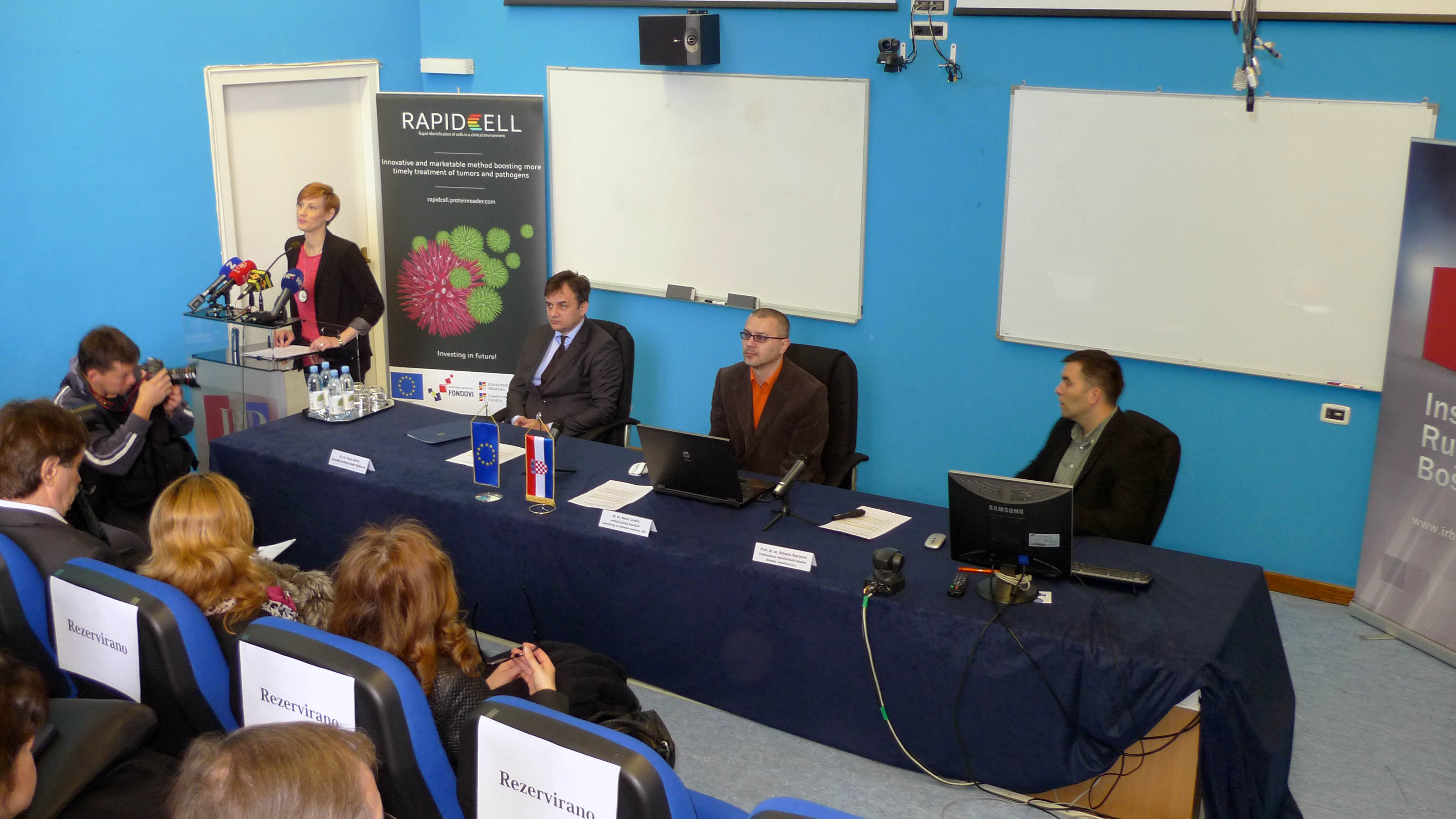At the press conference held today at the Ruđer Bošković Institute, the project team formally presented a prototype of the method to the media representatives. Besides press, the ceremony gathered representatives of relevant ministries, the City of Zagreb and key potential users, such as directors of some of the leading Croatian clinics and representatives of Croatian pharmaceutical and chemical companies.
The prototype, which was presented today, was developed by the RBI scientists in collaboration with colleagues from the Zagreb Faculty of Food Technology and Biotechnology (PBF) within IPA project RapidCell – Rapid identification of cells in a clinical environment, under the leadership of Dr. Mario Cindrić, Head of the Laboratory for systemic biomedicine at the RBI.
The research is based on a new patented reagent and novel computational method which was a result of the many years of cooperation between a range of domestic and foreign researchers and experts. This original method is based on connecting biochemistry, genetics, proteomics and computing with clinical practice as to determine tumour and pathogenic microorganisms, and provides a significant improvement in medical diagnostics. Improvements are related to the biotypization procedure i.e. accurate and fast determination of species and disease pathogens.
The idea that lies behind this new technology is enhanced de novo sequencing of unknown peptide amino acid sequences in negative (enabled by mild overnight derivatization by carrier that contains two negatively charged groups without observed side reactions or peptide degradation) and positive ion mode of the same peptide used as quality control (MS/MS of derivatized or underivatized precursor ions).
Except for medical diagnosis, this method will find its application in the food and pharmaceutical industry that will be able to use the research results in the quality control processes and the design of new production processes.
The RapidCell Project started in March 2013. The project is worth 631.203,70 EUR and the European Union has provided financial support for the project in the amount of 531 347,27 EUR under the European Regional Development Fund. By launching this event the RBI marks the successful completion of the project.
DISCLAIMER: The contents of this publication are the sole responsibility of the RBI PR Office and can in no way be taken to reflect the views of the European Union.


